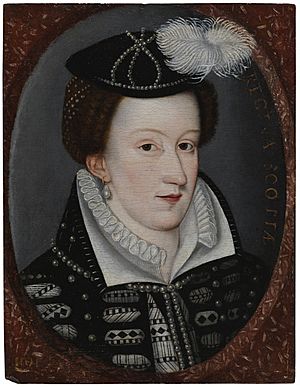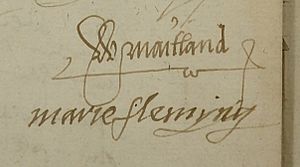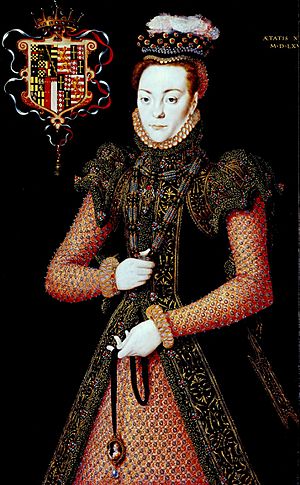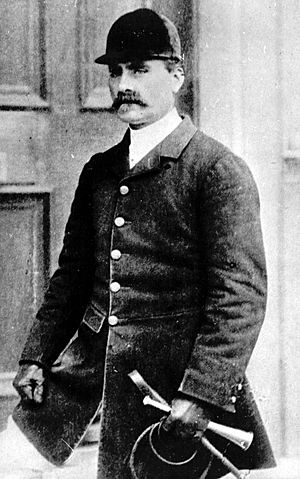Jewels of Mary, Queen of Scots facts for kids
The jewels of Mary, Queen of Scots (1542–1587) are mainly known through the evidence of inventories held by the National Archives of Scotland. She was bought jewels during her childhood in France, adding to those she inherited. She gave gifts of jewels to her friends and to reward diplomats. When she abdicated and went to England many of the jewels she left behind in Scotland were sold or pledged for loans, first by her enemies and later by her allies. Mary continued to buy new jewels, some from France, and use them to reward her supporters. In Scotland her remaining jewels were worn by her son James VI and his favourites.
Contents
- French fashion and the Scottish queen
- Gifts and jewels at the Scottish court
- Marriage, pregnancy, pomander beads, and the Queen's will
- Regent Moray and the queen's jewels
- Regent Morton and the jewels
- Mary in England
- Jewels with political messages
- Relics, crucifixes, and the Earl of Northumberland
- James VI
- The Eglinton parure
- The Penicuik jewels and Geillis Mowbray
- The inventories
- Images for kids
French fashion and the Scottish queen
Mary, Queen of Scots inherited personal jewels belonging to her father, James V. For a time, the Earl of Arran was ruler of Scotland as regent. In 1556, after her mother Mary of Guise had become regent, Arran returned a large consignment of royal jewels to the young queen in France.
Mary had jewels repaired and refashioned by Parisian jewellers including Robert Mangot who made paternoster beads and Mathurin Lussault, who also provided gloves, pins, combs and brushes. Lussault himself was a patron of the sculptor Ponce Jacquiot, who designed a fireplace for the goldsmith. Her clothes were embroidered with jewels, a white satin skirt front and sleeves featured 120 diamonds and rubies, and coifs for her hair had gold buttons or rubies, sewn by her tailor Nicolas du Moncel in 1551.
In 1554 the queen's governess Françoise d'Estainville, Dame de Paroy wrote to Mary of Guise asking permission to buy two diamonds to lengthen one of Mary's "touret" headbands, incorporating rubies and pearls the queen already owned, set in gold entredeux or chatons. She also wanted to buy a gown of cloth-of-gold for the queen to wear at the wedding of Nicolas, Count of Vaudémont (1524-1577) and Princess Joanna of Savoy-Nemours (1532–1568) at Fontainebleau. This new costume was intended to emulate the fashion adopted by the French princesses of the blood, Elisabeth of Valois and Claude of France (1547–1575).
The French court patronised an artist Jean Court dit Vigier who worked in enamels on metal, and he decorated and signed a cup or tazza with scenes of the Triumph of Diana and the Feast of the Gods, with the coat of arms of Scotland on the foot. The arms are surmounted by the Dauphin's crown and the piece has been called the queen's "betrothal cup", as it was conjectured it had been made for the occasion. The tazza is now in the collection of the Cabinet des Médailles in Paris. It is not clear if the painter Jean de Court who received a pension from Mary and was listed as a 'valet' and painter in her household expenses was the same artist as the enameller.
Mary was betrothed to the French prince Francis, and was given jewels to wear which were regarded as the property of the French crown. Her jewelled appearance at their wedding in 1558 included necklaces with a pendant of "incalculable value." Her mother-in-law, Catherine de' Medici, gave her necklaces which she had commissioned from goldsmiths in Lyon and Paris.
After Francis died in December 1560, Mary had to return many of the French crown jewels to Claude de Beaune, Dame du Gauguier, a lady-in-waiting and treasurer to Catherine de' Medici. The diamonds were described in detail and valued in the inventory. The most important suite of hairpieces and necklaces featured the repeated crowned initial "F" for Francis. One large ruby was known as the "Egg of Naples", a large emerald was from Peru. Catherine de' Medici gave her a receipt on 6 December 1560. An inventory in the National Archives of Scotland shows Mary was allowed to keep some pieces, and she would later insist that much of her personal jewellery had been given to her in France.

Mary had several sets of back and fore "garnishings" sometimes with a matching necklace. These were worn on the headband or coif over the forehead. One garnishing consisting of large pearls was listed as sewn on black velvet, but usually any fabric components were not mentioned. She wore coifs, a kind of hair net, and in 1578, left behind in Edinburgh Castle, were "sevin quaiffis of gold, silver, silk, and hair". Her ear rings were described in Scots as "hingaris at luggis".
Gifts and jewels at the Scottish court
Queen Elizabeth had proposed sending her portrait to Mary in Scotland in January 1562, but her painter was unwell. Mary, Queen of Scots mentioned to the ambassador Thomas Randolph that she would send Elizabeth a ring with a diamond made like a heart by the envoy who brought the portrait, and after the portrait failed to materialise, in June 1562 she told Randolph she would send the ring with some verses she had written herself in French. George Buchanan wrote two Latin epigrams concerning Mary's gifts of diamond rings to Elizabeth, one titled Loquitur adamas in cordis effigiem sculptus, quem Maria Elizabethae Anglae misit, said to be a translation of Mary's original. The English courtier and poet Sir Thomas Chaloner also translated the verse.
It was said that King James or Charles I gave this ring with a heart-shaped diamond to Sir Thomas Warner which passed to his descendents including the surgeon Joseph Warner. The Warner ring has a rose pear-shaped diamond in a black-enamelled setting. The ring was also said to be one which Elizabeth gave to the Earl of Essex and he returned to her from the Tower of London. In various 19th-century accounts of the "Essex" and Warner rings, Mary's gift and the verses are associated incorrectly with her marriage to Darnley in 1565.
In October 1564 Matthew Stewart, 4th Earl of Lennox arrived at the Scottish court, and gave Mary a "marvellous fair and rich" jewel, a clock and dial, and a looking glass set with precious stones in the "4 metals". He gave diamond rings to several courtiers and presents to the queen's four Maries. The English ambassador Thomas Randolph observed Mary playing dice with Lennox, wearing a mask after dancing, and losing a "pretty jewel of crystal well set in gold" to the earl.
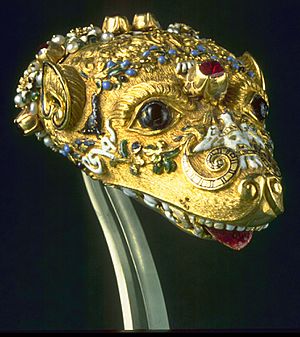

In July 1565 Mary paid a French goldsmith in Edinburgh, Ginone Loysclener, £76 Scots. This was probably for gifts at her wedding to Lord Darnley. Mary's household list of 1567 includes a French goldsmith called Pierre Richevilain, but it is unclear if he ever worked in Scotland.
Marriage, pregnancy, pomander beads, and the Queen's will
Soon after the marriage the couple faced a rebellion now known as the Chaseabout Raid. In need of money, it was said they tried to pawn some of her jewels in Edinburgh for 2,000 English marks, but no-one would lend this sum.
When Mary, Queen of Scots was pregnant in 1566 she made an inventory of her jewels, leaving some as permanent legacies to the crown of Scotland, and others to her relations, courtiers, and ladies-in-waiting. The inventory is regarded as a kind of will. Mary Livingston and Margaret Carwood helped her and signed the documents. The jewellery is sorted in categories, seven pieces were described as recent purchases.
Mary wanted the Earl of Bothwell to have a jewel for a hat with a mermaid set with diamonds and a ruby, which she kept close by her in her cabinet. An "ensign" or hat badge in the form of a turtle "en tortue" with ten rubies had been a gift from David Rizzio and was bequeathed to his brother Joseph. The queen's four year old nephew Francis Stewart, son of Lord John Stewart, would have had several sets of gold buttons and aiglets, and a slice of unicorn horn mounted on silver chain, used to test for poison.
Marten furs and zibellini
If Mary had died in childbirth, one Scottish lady in waiting, Annabell Murray, Countess of Mar and her daughter Mary Erskine would have received jewels including a belt of amethysts and pearls, a belt of chrysoliths with its pendant chain, bracelets with diamonds, rubies and pearls, pearl earrings, a zibellino with a gold marten's head, and yet another belt with a miniature portrait of Henri II of France. An Edinburgh goldsmith John Mosman had made a gold marten's head for her mother, Mary of Guise, in 1539, and Mary had several, some described in French as "hermines" or as a "teste de marte" with matching gold feet to clip to the fur. The accessory seems to have had allusions to pregnancy and fertility. An engraving for the use of jewellery makers was published by Erasmus Hornick in 1562, which depicts a muzzled animal head with similarities to a zibellino belonging to Anna of Austria drawn by Hans Muelich in 1552, and another held by Frances Sidney, Countess of Sussex in one of her portraits at Sidney Sussex College, Cambridge.
Anne of Denmark may have inherited one of these, described in her 1606 inventory as, "a sable head of gold with a collar or muzzle attached, garnished with diamonds, rubies, emeralds, and sapphires, with 4 feet". The Earl of Leicester gave Queen Elizabeth a similar gold sable head and feet in 1585. An example with a ruby tongue and feet set with turquoises was listed in the 1547 inventory of Henry VIII, and was given to Lady Jane Grey. Another, with a marten skin, was imported with other jewels to London by an Italian merchant and milliner Christopher Carcano in 1544.
Scented pomander beads
Mary had two complete suites of head-dresses, necklaces and belts comprising openwork gold perfume beads to hold scented musk. Mary bequeathed one set, with pearl settings in between the scented beads, to her half-sister Jean Stewart, Countess of Argyll, the other to her sister-in-law Agnes Keith, Countess of Moray. These items are not listed in later Scottish inventories and Mary may have given them away. The beads are known as pomander beads from the name of the scented compound, a London goldsmith John Mabbe had 224 "pomanders of gold filled with pomander" in 1576.
Mary sent a chain of pomander beads strung on gold wire to Catherine, Lady Knollys the wife of Sir Francis Knollys in August 1568. She gave Anne Percy, Countess of Northumberland a "pair of beads of gold of perfume" which had been her gift from the Pope. Mary gave other pieces with scented beads to her servants in England including a chain to Elizabeth Curle and bracelets to Mary, the daughter of Bastian Pagez. The Penicuik necklace, (see below), in the National Museums of Scotland, is comprised of this type of pomander beads, and was her gift to Geillis Mowbray. Some accounts of Mary disrobing for her execution mention a chain of pomander beads, or her wearing a pomander necklace with an "Agnus Dei". The Royal Collection Trust has a larger silver gilt segmented pomander for scent traditionally identified as Mary's.
Pomander beads occur in the inventories of several royal women and aristocrats. A chain of small pomander beads with pearl "true-loves" was noted in the inventory of Anne Seymour, Duchess of Somerset. Philip II of Spain gave Mary I of England a bracelet of 57 little pomander beads. Later Lady Anne Clifford owned this scented bracelet and wore it under her stomacher. Lady Catherine Gordon, the widow of Perkin Warbeck, owned a "great pomander of gold" which she would have worn suspended by a chain from her belt or girdle.
Gifts at the baptism of Prince James
Mary safely gave birth to Prince James at Edinburgh Castle. According to Anthony Standen a diamond cross was fixed to James's swaddling clothes in the cradle. His christening was held at Stirling Castle on 17 December 1566. Mary gave presents of her jewels as diplomatic gifts. The Earl of Bedford represented Queen Elizabeth at the baptism and was guest of honour at the banquet and masque. She gave him a gold chain set with pearls, diamonds, and rubies. According to James Melville of Halhill she also gave Christopher Hatton a chain of pearls and a diamond ring, a ring and a chain with her miniature picture to George Carey, and gold chains to five English gentlemen of "quality". She received a necklace of pearl and rubies and earrings from the French ambassador, the Count de Brienne. In January 1567 Obertino Solaro, Sieur de Moretta, an ambassador of the Duke of Savoy, who was late for the baptism, gave Mary a fan with jewelled feathers. Bedford refused to go in the chapel at the baptism, and so Jean Stewart, Countess of Argyll went in his place, as godmother, and he gave her a ring with a ruby, from Elizabeth.
Regent Moray and the queen's jewels
In 1567 Mary, Queen of Scots was deposed and imprisoned in Lochleven Castle, and her half-brother, James Stewart, became the ruler of Scotland and was known as Regent Moray. His secretary John Wood and Mary's wardrobe servant Servais de Condé made inventories of her clothes and jewels.
Regent Moray and the treasurer Robert Richardson raised loans with jewels as security and sold some pieces with precious stones to Edinburgh merchants. Robert Melville arranged with Valentine Browne, treasurer of Berwick, for loans secured on the jewels. John Wood and Nicoll Elphinstone marketed Mary's jewels in England. Nicoll Elphinstone sold Mary's pearls to Queen Elizabeth, despite offers from Catherine de' Medici. The chains of pearls, some as big as nutmegs, are thought to be represented in Elizabeth's "Armada Portrait".

Other jewels sold by Regent Moray ended up in the hands of the widows of two merchants who dealt with him. Helen Leslie, the "Goodwife of Kinnaird", was the widow of James Barroun, who had loaned money to Moray. She married James Kirkcaldy, whose brother, Moray's friend William Kirkcaldy of Grange, unexpectedly declared for Mary in 1570.
Helen, or Ellen, Achesoun, a daughter of the goldsmith John Achesoun, was the widow of William Birnie, a merchant who had bought the lead from the roof of Elgin Cathedral in 1568 expecting a lucrative deal in scrap metal. Achesoun and Birnie had lent Moray £700 Scots and taken as security some of Mary's "beltis and cousteris". The "couster", or in French a "cottouere" or "cotiere", was the gold chain that descended from a woman's belt with its terminal pendant. One of these was described in Scots as, "ane belt with ane cowter of gold and ceyphres (ciphers) and roissis quheit and reid inamelit (roses enamelled white and red), contenand knoppis and intermiddis (entredeux) with cleik (clasp) and pandent 44 besyd the said pandent."
After Birnie died, Achesoun married Archibald Stewart, a future Provost of Edinburgh and friend of John Knox. A silver mounted "mazer" or cup made for the couple, engraved with their initials, survives. Despite their Protestant credentials, they later became financial backers of Mary's cause in Scotland by lending money to William Kirkcaldy, on the security of more of the queen's jewels.
After Mary escaped from Lochleven in May 1568 and made her way to England, the jewel sales were halted. Most of the remaining pieces which Mary had left behind were kept in a coffer in Edinburgh Castle. The Parliament of Scotland exonerated Regent Moray from selling Mary's jewels but Queen Elizabeth, according to Mary's request, wrote to ask him not to sell her jewels in October 1568. Moray agreed and claimed he and his friends had not personally been "enriched worth the value of a groat of any of her goods".
After Moray was assassinated in January 1570, Mary wrote from Tutbury and Sheffield Castle to his widow, Agnes Keith, asking for "our H", the "Great H of Scotland" and other pieces. Agnes Keith kept these jewels. Regent Moray had taken them to England and brought them back unsold. His successor Regent Lennox wanted them, while the Earl of Huntly wrote for them for Mary, Agnes Keith did not oblige. The "Great H" or "Harry" may have been the priceless pendant which Mary had worn at her first wedding in 1558.
Regent Lennox said in August 1570 he would not borrow money on the security of Mary's jewels, and promised to make an inventory of her things, her gowns and furnishings, which were safe in Edinburgh castle, apart from the tapestry hanging at Stirling Castle. During the "Lang Siege" of Edinburgh Castle, the last action of the Marian Civil War, the Captain of the castle, William Kirkcaldy of Grange gave jewels to supporters of Mary as pledges for loans they gave him to pay his garrison. The goldsmiths James Mosman and James Cockie valued the jewels as pledges for loans, and Mosman loaned his own money and accepted jewels as security. Several documents concerning the jewels and loans survive from this time, including a note about Mary's marriage ring, which was in the hands of Archibald Douglas.
Regent Morton and the jewels
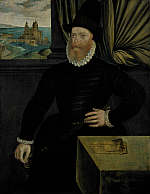
The siege caused great suffering in Edinburgh. The new ruler of Scotland Regent Morton made strenuous efforts to recover the jewels after the castle surrendered on 28 May 1573. As English and Scottish soldiers entered the castle, James Mosman gave his share of the queen's jewels to Kirkcaldy, wrapped in an old cloth or "evill favoured clout", and he put them in a chest in his bedchamber. The English commander at the siege, William Drury recovered the jewel coffer from a vault and redeemed some jewels from lenders including Helen Leslie, Lady Newbattle and Helen Achesoun. They came to his lodging at Leith where Kirkcaldy was held. Thomas Randolph later recalled that William Drury and Archibald Douglas were involved in the sale of jewels and loans, earlier during the siege, when Drury and Randolph were ambassadors together. On 3 August 1573 William Kirkcaldy, his brother James, James Cockkie, and James Mossman were executed by hanging.
Morton obtained the records of the loans and pledges made by Kirkcaldy, and later wrote of his pleasure at this find to the Countess of Lennox. Kirkcaldy made a statement about the jewels for the benefit of William Drury. Amongst the papers from the castle, Kirkcaldy had written in the margins of an inventory gifts made, or to be made, to Margery Wentworth, Lady Thame, widow of John Williams, Master of the Jewels, and wife of William Drury. Kirkcaldy had blotted out some of these marginal notes, and now signed a statement that Lady Thame had refused any gifts of Mary's jewels from him back in April 1572 when she was staying at Restalrig.
Mary Fleming, who had helped make this inventory of the jewels with her husband William Maitland and Lady Seton, was ordered to return a chain or necklace of rubies and diamonds. Agnes Gray, Lady Home surrendered jewels which had been her security for a loan of £600 Scots. The lawyer Robert Scott returned a "carcan" or garnishing, circled about with pearls, rubies and diamonds. William Sinclair of Roslin had sold his pledge of 200 gold royal buttons weighing 31 ounces to the lawyer, Thomas McCalzean for 500 merks. McCalzean surrendered the buttons to the Privy Council and Morton on 6 July. On 28 July 1573 the triumphant Regent sent Mary's gold buttons and pearl-set "horns", recovered from the Duke of Chatelherault, to Annabell Murray at Stirling Castle to be sewn on the king's clothes.
On 3 August Morton sent a copy of Kirkcaldy's inventory to the Countess of Lennox, in the hope that she could get all the jewels still in William Drury's hands and now in Berwick sent to him. On 7 August, on behalf of the Earl of Huntly, Alexander Drummond of Midhope brought Morton a garnishing for the queen's headband comprising seven diamonds (one large and cut square) , six rubies, and twelve pearls set in gold. Huntly had raised a loan for this piece with Alexander Bruce of Airth.
Morton wrote to Countess of Lennox again later in August, asking for a progress report. Ninian Cockburn, the bearer of his letter, had delivered some jewels from Archibald Douglas to Valentine Browne, treasurer of Berwick. In October 1573 Morton sent money to Berwick to redeem one of the queen's garnishings, comprising a pair of headbands and a necklace of "roses of gold" set with diamonds. Robert Melville was interrogated about the jewels in October. Gilbert Edward, the page of Valentine Browne, the treasurer of Berwick, ran away from his master and stole several jewels, including a jewelled mermaid. Browne's mermaid was described in similar terms to an "ensign" Mary had inherited from her father, James V.
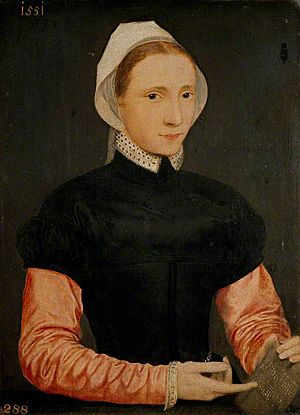
Morton had a prolonged negotiation with Moray's widow, Agnes Keith, now Countess of Argyll, for the return of the diamond and cabochon ruby pendant called the "Great H of Scotland" and other pieces. Unsurprisingly, Mary wrote again to the countess asking her to return the jewels to her instead. Agnes Keith claimed the jewels were security for her late husband's unpaid expenses as Regent, but she gave them to Morton in March 1575.
Morton resigned the regency in March 1579, and his half-brother, George Douglas of Parkhead, made an inventory of royal jewels, her costume and her dolls, furnishings, and library.
Mary in England
When Mary was recently arrived in England at Bolton Castle in July 1568, she asked a dependant of the border warden Lord Scrope called Garth Ritchie to ask Lord Sempill's son, John Sempill of Beltrees, the husband of Mary Livingston, to send her the jewels in their keeping. Garth Ritchie managed to bring some of the queen's clothes and a cloth of estate from Lochleven Castle, but Regent Moray would not give Sempill permission to send any jewels. Regent Lennox would later ask John Sempill to return jewels and furs belonging to Mary to him, including sable and marten furs or zibellini. Mary declared that the jewels Sempill had were gifts from the King of France and did not pertain to Scotland.
Mary had some jewelry and precious household goods with her in England. Inventories were made at Chartley in 1586 of pieces in the care of Jean Kennedy, and at Fotheringhay in February 1587. She usually wore a cross of gold and pearl earrings. Another gold cross was engraved with the Mysteries of the Passion. She kept in her cabinet a gold chain with a miniature portrait of Henry II of France and Catherine de' Medici. The chain had 44 pieces made as royal ciphers or initials, enamelled blue and red. The portrait was in a gold case called a "livret", an enamelled little gold book. The piece was probably worn as a belt or girdle.
A list of items taken from Mary Queen of Scots in 1586 includes a looking glass decorated with miniature portraits of Mary and Elizabeth, and a little chest decorated with diamonds, rubies, and pearls. This may represent furniture for the queen's dressing table. There was also a gold pincase to wear on a girdle and some items of costume including a black velvet cap with a green and black feather. A longer list of the queen's jewels was made at Chartley in 1586, and after her execution. There were two porcelain spoons, one silver, one gold, a bezoar stone set in silver, and a slice of unicorn horn set in gold with a gold chain. There was a charm stone against poison, as big as a pigeon's egg, with a gold cover, and another stone to guard against melancholy. There were boxes of costly terra sigillata and powdered mummy, coral, and pearls.
Jewels with political messages
Mary Queen of Scots wrote from Sheffield Castle in 1574 and 1575 to her ally, the Archbishop of Glasgow in Paris asking him to commission jewelry for her. She wanted gold lockets with her portrait to send to her friends in Scotland. As a gift for Queen Elizabeth, Mary wanted bracelets or a pendant or gold mirror to hang from a belt. This would be decorated with her cipher or initials conjoined with Elizabeth's, and with other motifs, emblems, or inscriptions, according to the "device" made by her uncle, the Cardinal of Lorraine. She also asked for a gold belt and necklace as a present for the daughter of her chancellor, Gilles du Verger. The portraits, to be distributed as keepsakes for her supporters, may have been her profile cut in cameo. Several examples exist, and one is said to have been Mary's gift to Thomas Howard, 4th Duke of Norfolk. The Duke of Norfolk, who entertained the idea of marrying the Scottish queen, had a gold tablet with her picture in 1570, and he sent her two diamond rings. A sapphire ring in the possession of the Duke of Hamilton is thought to have been sent by Mary to Lord John Hamilton.
While she was at Chatsworth in September 1578 Mary wrote to the Archbishop again, sending a "device", a description of the concept and theme for a jewel she wanted to be made in gold and enamel as a gift for her son, James VI. In 1570 the Countess of Atholl, and her friends, known as the "Witches of Atholl", had commissioned a jewel which referred directly to the succession to the crown of England. The surviving "Lennox Jewel" now in the Royal Collection is a propaganda jewel of this type, thought to have been commissioned by Mary's mother-in-law Margaret Douglas, Countess of Lennox. The Lennox jewel has sometimes been attributed to prominent Edinburgh goldsmiths including Michael Gilbert, George Heriot and James Gray because the mottoes appear to be Scots, although no evidence has yet been found that it, or the Countess of Atholl's jewel, were made in Scotland.
Some jewels were made to denigrate Mary's cause. The Spanish ambassador in London, Guerau de Espés, reported that the Earl of Leicester gave Queen Elizabeth as a New Year's day gift in 1571 a jewel with a miniature painting showing her enthroned with Mary in chains at her feet, while Spain, France and Neptune bowed to her.
Relics, crucifixes, and the Earl of Northumberland
Mary owned two holy thorns, relics of the crown of thorns, a gift from her father-in-law, Henri II. The thorns had been bought in 1238 by Louis IX in Constantinople. Mary is said to have given the two thorns to Thomas Percy, 7th Earl of Northumberland. One now belongs to Stonyhurst College, a gift from Thomas Weld. The thorn is housed in a gold reliquary decorated with spirals of pearls commissioned in 1590 by an English Catholic Jane Wiseman. Jane Wiseman had a similar reliquary made for Mary's other thorn, lacking the pearls. This reliquary eventually found a home at Saint Michael's Church, Ghent.
Mary sent other gifts to the Earl of Northumberland according to the confession of his servant Hameling in 1570, including an enamelled gold ring, a diamond ring, and for the Countess of Northumberland a pair of perfumed gold paternoster beads which the Pope had given to Mary and an enamelled silver necklace, the latter item delivered by Francis More. The Earl sent Mary a jewel that had been a gift to his wife from a Spanish courtier in the time of Mary I of England and a diamond ring from the Countess, and Mary swore she would always wear it.
A gold and enamelled crucifix is said to have been her gift to John Feckenham, Abbot of Westminster. A much less elaborate silver crucifix found at Craigmillar Castle before 1815 is said to have hers. A sixteenth-century locket with a vignette of the crucifixion is said have been her gift to Thomas Andrews, Sheriff of Northampton, shortly before her execution at Fotheringhay Castle.
James VI
James VI was able to wear the jewelled gold buttons that had belonged to her her mother, and adapt the gold settings from her necklaces to adorn his bonnets. In October 1579 he became an adult ruler and left Stirling Castle. He ordered workmen to carry the coffer with his mother's jewels from Edinburgh Castle to Holyroodhouse.
He gave several of his mother's jewels to his favourite Esmé Stewart in October 1581, including the "Great H" and a gold cross set with seven diamonds and two rubies. In September 1584 a German travel writer Lupold von Wedel saw James, who was staying at Ruthven Castle, wearing this cross on his hat ribbon in St John's Kirk in Perth. In October the valet John Gibb returned the cross to the Master of Gray, the newly appointed Master of the Royal Wardrobe. It was probably the same diamond and ruby cross that his grandmother, Mary of Guise had pawned to John Home of Blackadder for £1000 when she was Regent of Scotland, and Mary, Queen of Scots had redeemed.
James Stewart, Earl of Arran and Elizabeth Stewart, Countess of Arran directed the Master of Gray to dress the king in his exiled mother's jewels. He had one of the queen's head garnishings of diamonds, pearls, and rubies broken up to embroider a cloak for the young king, during the visit of the English ambassador Edward Wotton in May 1585. Some of the gold settings were put on a bonnet string. The English diplomat William Davison reported that the Countess of Arran had new keys made for the coffers containing the Mary's jewels and clothes. She was said to have tried on many of the old queen's garments to see if they fitted her, and chosen what she likes. According to the English ambassador William Knollys, she was imprisoned in November 1585 for giving her husband jewels worth 20,000 crowns from Edinburgh Castle when he tried to leave the country. Arran returned the jewels in January 1586.
On 3 February 1603 James VI of Scotland gave James Sempill of Beltries, a son of Mary Livingston, a jewel which had belonged to Mary as a reward for his good service and faithful conduct in diplomatic negotiations in England. The jewel was a carcatt (a necklace chain) with a diamond in one piece and a ruby in another, with a tablet (a locket) set with a carbuncle of a diamond and ruby, set around with diamonds.
In 1604 King James had the "Great H" dismantled and the large diamond was used in the new "Mirror of Great Britain" which James wore as a hat badge.
The Eglinton parure
A necklace from the collection of the Earls of Eglinton is traditionally believed to have been Mary's gift to Mary Seton. The piece includes "S-shaped snakes in translucent dark-green enamel". It was divided into two in the 17th-century, one part is displayed at the National Museum of Scotland and the other, held by the Royal Collection, at Holyrood Palace. These may have been pieces of a longer chain or cotiere.
Later, Anne of Denmark is known to have given jewelry to her maid of honour Anne Livingstone including a chain (or belt) comprising 96 pieces; "22 of greane snakes sett with two small pearles", and 43 pieces shaped "like S with three of sparks of rubies". This was perhaps the item that Mary, Queen of Scots had given to Mary Seton. The gifts were made to Anne Livingstone when she left court for Scotland in 1607, and on her marriage to Mary Seton's great-nephew, Alexander Seton of Foulstruther.
The necklace and a painting once attributed to Hans Holbein were said to have come into the Eglinton family from the Setons in 1611, when Alexander Seton of Foulstruther, a son of Robert Seton, Earl of Winton and Margaret Montgomerie, became Earl of Eglinton. He changed his surname to Montgomerie, and married Anne Livingstone, the childhood companion of Elizabeth of Bohemia and favourite of Anne of Denmark.
Mary's biographer Agnes Strickland visited Eglinton Castle in 1847 and Theresa, Lady Eglinton lent her the necklace. Strickland's assistant Emily Norton made a drawing of it. In 1894 George Montgomerie, 15th Earl of Eglinton rediscovered the necklace in the muniment room at Eglinton. He sold it by auction, for the benefit of his sisters, according to his father's will. By this time the jewel had long been divided into at least two pieces, another chain with green serpents was at Duns Castle in the possession of the Hay family. This section of the necklace came to the Hay family when Elizabeth Seton married William Hay of Drumelzier in 1694. The moiety from Eglinton was presented by Lilias Countess Bathurst to Queen Mary in 1935.
Golf and the Seton necklace
Mary, Queen of Scots and Lord Darnley played games like bowls and wagered high stakes, and in April 1565 when Mary Beaton won at Stirling Castle, Darnley gave her a ring and a brooch set with two agates worth fifty crowns. A similar story is told of the Seton necklace, that the queen gave it to Mary Seton after she won a round of golf at Seton Palace. Mary certainly played golf at Seton, and in 1568 her accusers said she had played "pall-mall and golf" as usual at Seton in the days after Darnley's death.
Mary Seton's golf connection was publicised around the time of the auction in Golf Magazine (March 1894), followed up by Robert Seton's 1901 Golf Illustrated article, 'Archery and Golf in Queen Mary's Time'.
The Penicuik jewels and Geillis Mowbray
These pieces are traditionally believed to have belonged to Geillis Mowbray of Barnbougle, who served Mary, Queen of Scots in England and was briefly betrothed to her apothecary, Pierre Madard. Geillis Mowbray made her own way to London in September 1585 and made a request to join Mary's household. Her sister Barbara Mowbray was already in the queen's household at Tutbury Castle and betrothed to marry the queen's secretary Gilbert Curll, and they married on 24 October 1585. Geillis was sent to Derby, and arrived at Tutbury on 9 November.
The jewels were heirlooms in the family of John Clerk of Penicuik. They consist of a necklace, locket and pendant. The necklace has 14 large filigree open-work "paternoster" beads which could be filled with perfumed musk. The locket has tiny portraits of woman and a man, traditionally identified as Mary and James VI. The gold pendant set with pearls may have been worn with the locket. The Penicuik jewels are displayed at the National Museum of Scotland. Mary bequeathed Geillis Mowbray jewels, money, and clothes, including a pair of gold bracelets, a crystal jewel set in gold, and a red enamelled "oxe" of gold. She kept Mary's virginals, a kind of harpsichord, and her cittern.
The fundraiser and purchase of the Penicuik jewels by the museum and their history were described in 1923 by Walter Seton. He explains the descent of the jewels in the Clerk family. Geillis Mowbray married Sir John Smith of Barnton. Their daughter, Geillis Smith married Sir William Gray of Pittendrum, and their daughter Mary Gray married the successful merchant John Clerk, who bought the Penicuik estate in 1646. Geillis Mowbray's son John Smith of Grothill and Kings Cramond was Provost of Edinburgh.
When William Kirkcaldy of Grange was about to be executed, Geillis Mowbray's father, the Laird of Barnbougle, who was now Kirkcaldy's brother-in-law, wrote to Regent Morton to plead for his life, offering money, service, and royal jewels worth £20,000 Scots. In 1603 Geillis' half-brother Francis Mowbray fell to his death from Edinburgh Castle.
The inventories
Most of the inventories and papers listing the jewels are held by the National Records of Scotland. They were written in French or in Scots. Some were published by Thomas Thomson in 1815, and others by Joseph Robertson in 1863. A 1906 work by Andrew Lang attempted to link jewelry and costume depicted in alleged portraits of Mary, Queen of Scots with the inventory descriptions.
Original documents include:
- Inventory of heirloom jewels received by Mary, Queen of Scots from the former Regent Arran, 3 June 1556. Includes a cupid with a ruby heart, a jewelled dagger given to James V by Francis I, and a mermaid with a diamond mirror and a ruby tail.
- 'Memoir of the Crown', list of jewels of Mary, Queen of Scots with others in her possession belonging to the French crown, 1550s, National Records of Scotland, E35/4
- Inventory of the jewel coffer in Edinburgh Castle, August 1571, National Records of Scotland E35/9/4, signatures described by Regent Morton.
- Declaration by William Kirkcaldy of Grange about the jewels, 13 June 1573.
- Answers of William Kirkcaldy of Grange, 11 July 1573, National Records of Scotland, E35/11/30.
- Deposition of William Kirkcaldy of Grange, 3 August 1573, British Library Add. MS 32091.
- Inventory of jewels recovered after the siege by William Drury, National Archives TNA, SP 52/25 fol. 146.
- Copy of William Drury's inventory, Hatfield, with differences including "... a ring with a great diamond, which was the Queen's marriage ring. One other great diamond."
- Inventory of Mary's goods in Edinburgh Castle, 1578, includes her books, her dolls or "pippens", and indicates which tapestries were hanging at Stirling Castle, British Library, Harley MS 4637 fol. 142.
- Inventory made at Fotheringhay after the execution of Mary, Queen of Scots, National Archives TNA, SP 53/21 fol. 39.
Images for kids
-
Regent Moray raised money from his sister's jewels, (Hans Eworth, Darnaway)


